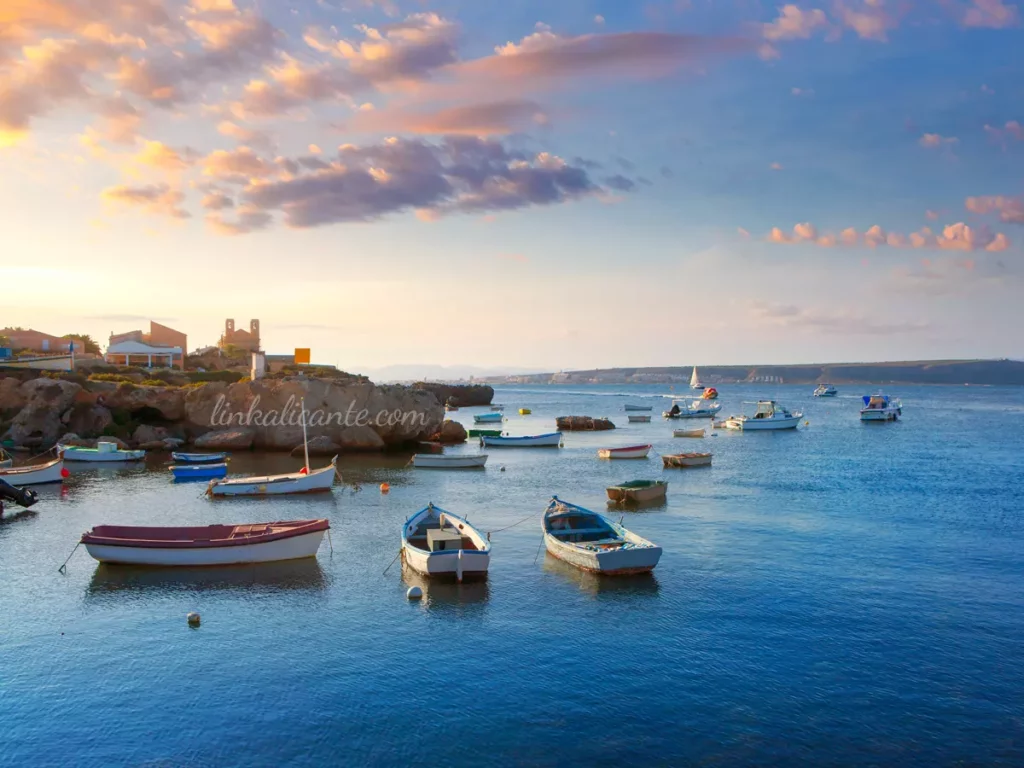The excursion to the island of Nueva Tabarca is one of the classic and most charming plans to enjoy a great day in the Costa Blanca (Alicante).
The boat trip to the island takes 25 minutes from Santa Pola, the nearest port. Once in Tabarca, it is worth strolling through the part of the village, a walled enclosure with a rich cultural heritage. You can’t miss a swim in its central sandy beach or in one of its beautiful coves with crystal clear waters, snorkeling in its marine reserve and, of course, tasting its rich seafood cuisine.
If you have time and desire, I recommend walking to the uninhabited part of the island, where you will find the lighthouse, the Tower of San Jose, the cemetery and the so-called “Captain’s Cross”. The total length of the island is just two kilometers, so the walk is very affordable.
In this article I tell you about the main attractions that you can -and should- know in Tabarca Island… Read on to discover them!
Index of contents
What to see in Tabarca in one day?
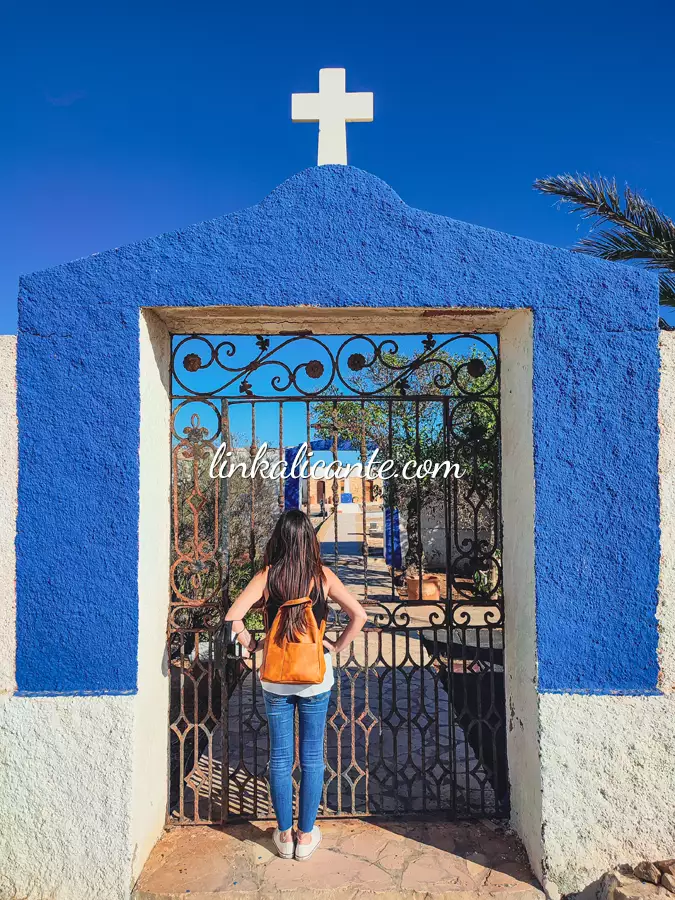
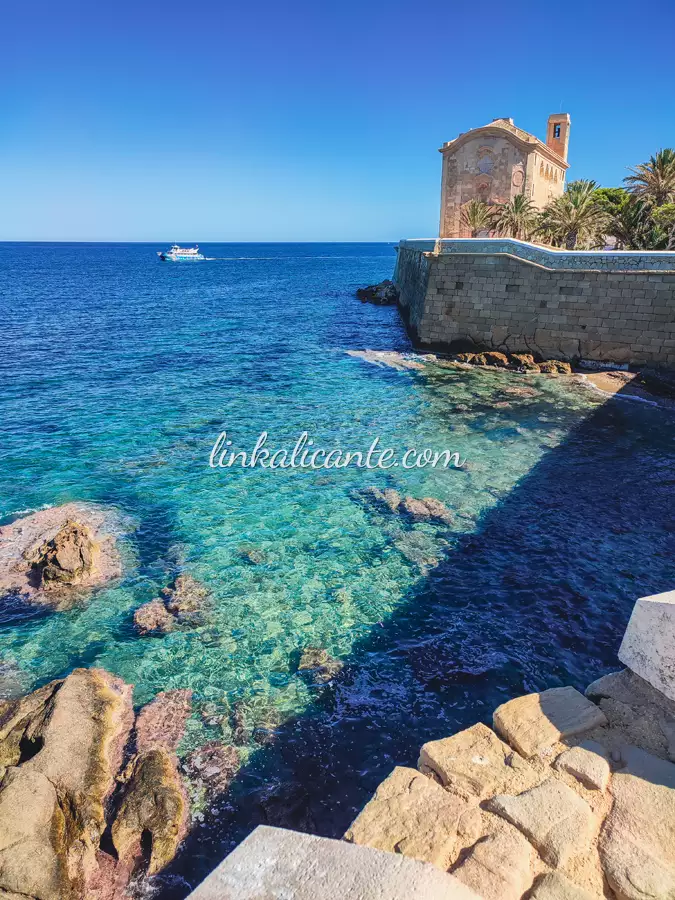
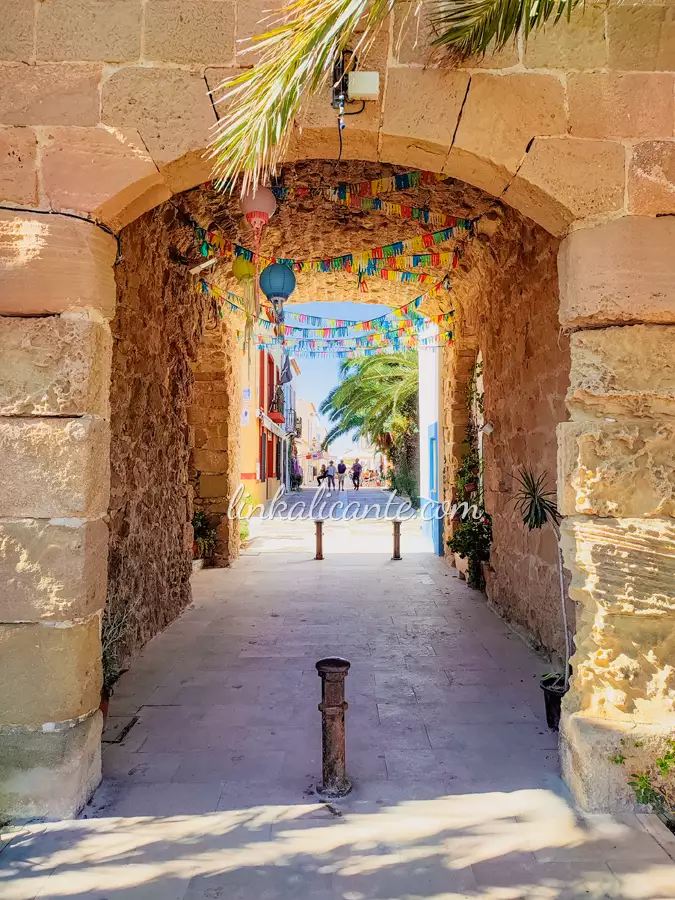
Tabarca is a small island barely 2 kilometers long and 400 meters wide. It is located 6 kilometers from Santa Pola and 20 km from Alicante. It is the only inhabited island -in winter just a few people- of the Valencian Community.
What to see in Tabarca Island? I’ll give you a very quick summary:
✓ The Nueva Tabarca Museum. You will find it as soon as you arrive, free admission.
✓ On the village side: the old ramparts and their entrance gates, the church, the Frenchman’s house (hanging over the cliffs). Strolling through its streets and squares, with that special touch.
✓ Bathe in its central beach, of fine sand, or one of the many coves (I will describe them later). Snorkeling.
✓ Stroll around the uninhabited part of the island and get to know its monuments and reefs.
✓ Enjoy its rich seafood gastronomy.
Guided tour Tabarca: if you want to take a guided tour to discover the interesting history of the island and the best pirate legends, book this free tour (you decide how much to pay).
Read on to learn more!
Recommendations for the visit
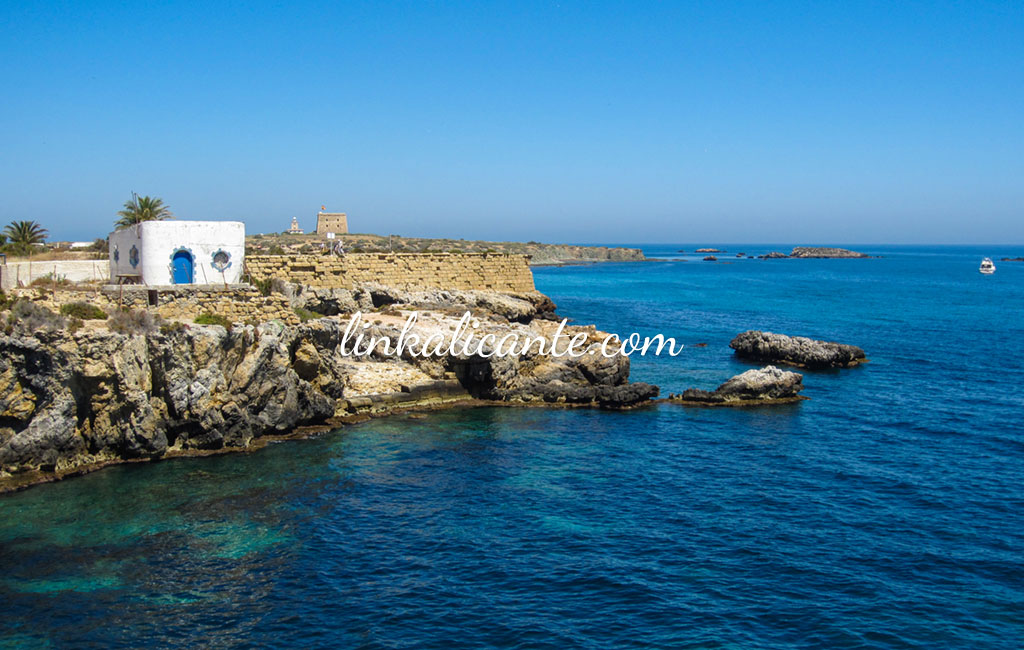
✓ From Santa Pola, the fastest and most economical option. Although there are ferries from different places, the trip from Santa Pola is the shortest (about 25 minutes) and cheapest. From Alicante it takes 1 hour.
✓ Don’t forget sunscreen, swimsuit, towel and booties, and comfortable walking shoes if you plan to visit the uninhabited part.
✓ Bring snorkeling equipment if you like to snorkel: Tabarca is ideal for it.
✓ Try to come with just enough, so you will have more freedom to wander around the island. A backpack is the most comfortable.
✓ Buy your tickets in advance online. Tabarkeras is one of the companies with more tradition (since 1975) to make an excursion to the island. If instead of arriving by boat from Santa Pola, you prefer to enjoy a day of sailing, book this 6-hour catamaran excursion (from Alicante).
Best time to visit Tabarca? It depends on your tastes. If you like the sea and diving, June, September and October are ideal and calmer. In July and August there is more hustle and bustle. Out of season the island is very quiet, and in spring the little vegetation looks green and radiant.
✓ If you are planning to spend a few days on the Costa Blanca, don’t miss the articles about Santa Pola, Altea and other visiting guides.
Where to sleep in Tabarca?
Spending a night in Tabarca will allow you to enjoy the magical sunsets and sunrises from the island, away from the usual hustle and bustle during the day.
✓ Boutique Hotel Isla Tabarca. Located in the former Governor’s House.
✓ La Trancada. Charming rural house, an old fisherman’s house from the 18th century.
✓ Hostal Masin. Located very close to the Central Beach.
Map of recommended locations
Will you be able to find all these places of Tabarca Island?
Beaches and Coves in Tabarca
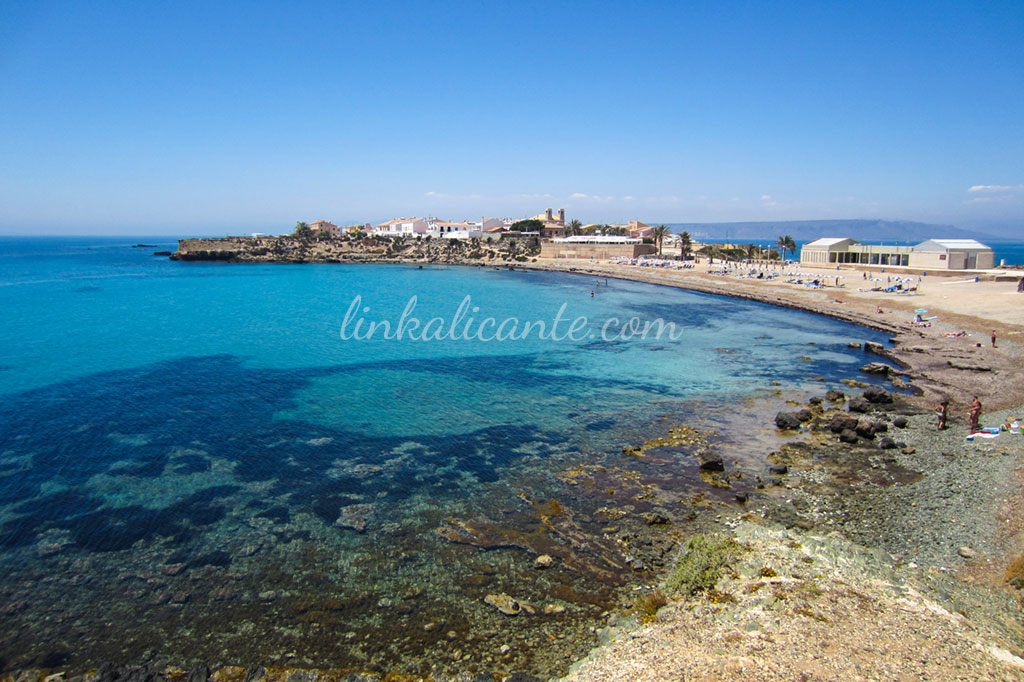
Surrounding the entire Tabarca Marine Reserve, you can find a large number of small coves and rocky areas where you can relax, sunbathe, swim, snorkel or enjoy an incredible sunset.
Tabarca Beach
Locally it is also known as Platja de l’Illa or Central Beach and it is the most visited because it is the closest to the town of Tabarca. In addition, it has amenities such as several restaurants where you can enjoy the Levantine gastronomy and stores with hammocks and umbrellas for rent. In summer it is usually quite crowded, so I recommend looking for a quieter place in its countless coves.
Playa Grande
Platja Gran is one of the most amazing natural places in Tabarca. It is located southeast of the island (between the lighthouse and the cemetery), and here you can see a curious sample of green ophites (rock of volcanic origin).
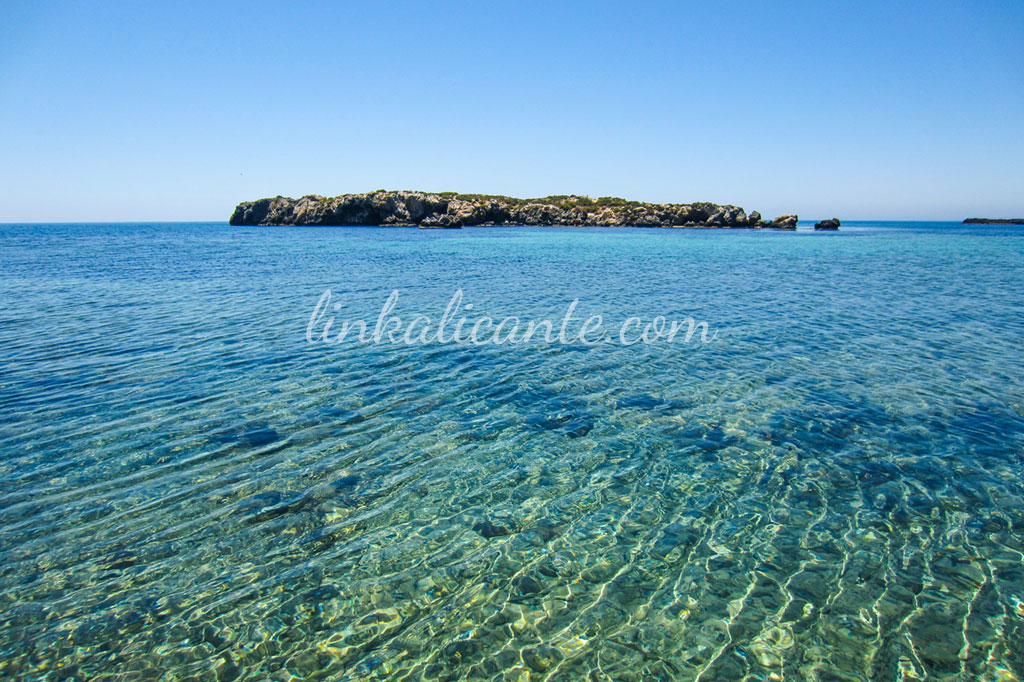
Birros Cove
This cove is located south of the town. It is perfect for snorkeling and to enjoy the wonders that the bottom of the Marine Reserve has to offer. These sea beds are full of Posidonia oceanica, where a multitude of animals such as octopus, starfish, sea cucumbers, brittle stars, brittle stars and numerous fish of all colors coexist.
Cala del Francés or Cala de la Guardia
Also located in the south of the island, very close to the central square of the town of Nueva Tabarca, this cove, like the previous one, is located within the monumental hiking route through Nueva Tabarca. Here you will find a grotto into which the waters of the sea penetrate. This cave is called the Cova del Llop Marí because this marine mammal (the ancient monk seal, now extinct) used to come here.
🌴 Descubre la provincia de Alicante
Si vienes a pasar unos días la provincia de Alicante, no te pierdas mis guías de viaje de los pueblos y ciudades con más encanto:
Monuments to visit
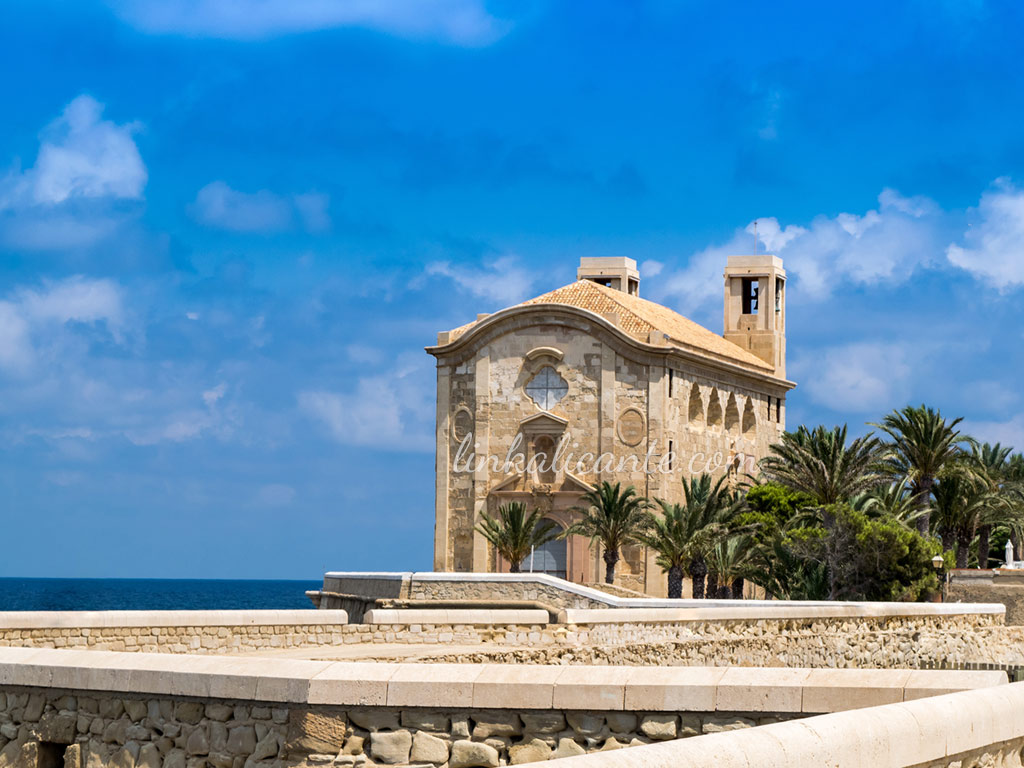
St. Peter and Paul’s Church
This baroque church was declared an Asset of Cultural Interest (BIC) in 1964 and dates back to the end of the 18th century. It has a special charm for several reasons: from here the views of the sea are spectacular, and its subsoil holds important secrets, many to be discovered. Visiting it at night by the light of the full moon is an unforgettable experience.
Walled enclosure
The walls surrounding the town center were declared a Historic-Artistic Site and an Asset of Cultural Interest in 1964. They were built by King Charles III in 1769 to defend the island from pirate raids. The walls are fairly well preserved and access to it is through three gates.
San Rafael Gate
Also known as the Levante gate, it is the first one we will find from the port and the best preserved of the three. On it there is an inscription announcing the twinning in 1975 of the islands of New Tabarca and San Pietro, south of Sardinia.
San Miguel Gate
Also called the Alicante gate or land gate, it is located in the northern area and through it you can access the old dock. It is one of the most beautiful for its views, as this door leads to a small cove with crystal clear waters.
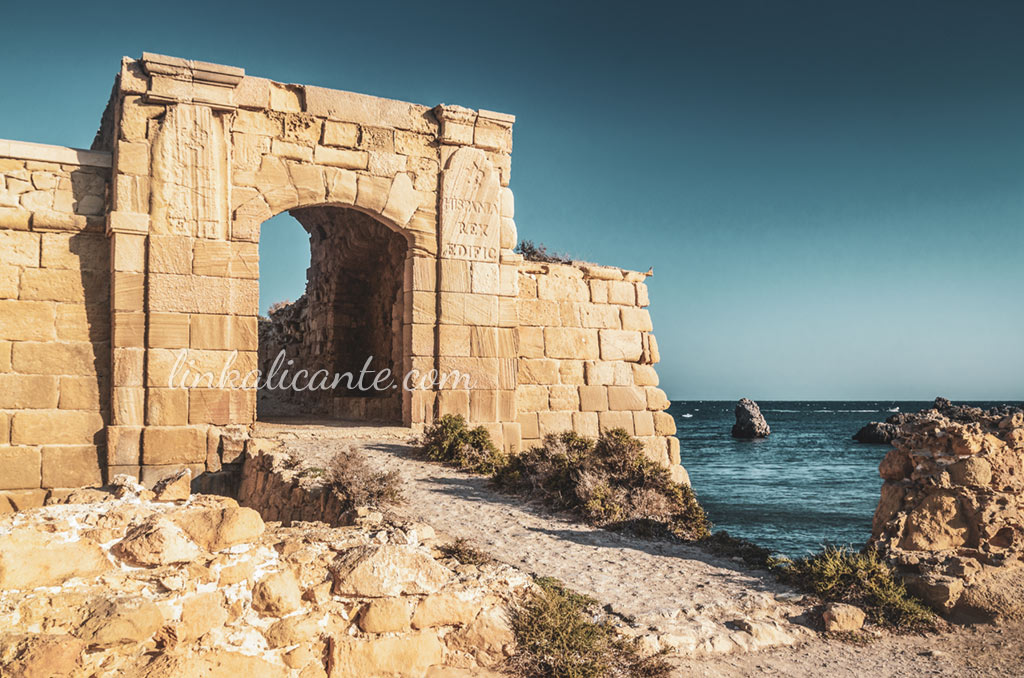
San Gabriel Gate
Also known as the Puerta de La Cantera because from here you can see the islet of La Cantera, from which all the stone was extracted to build Nueva Tabarca. It seems that it was not completely finished as it does not have a pediment on the Tuscan columns on either side of the opening.
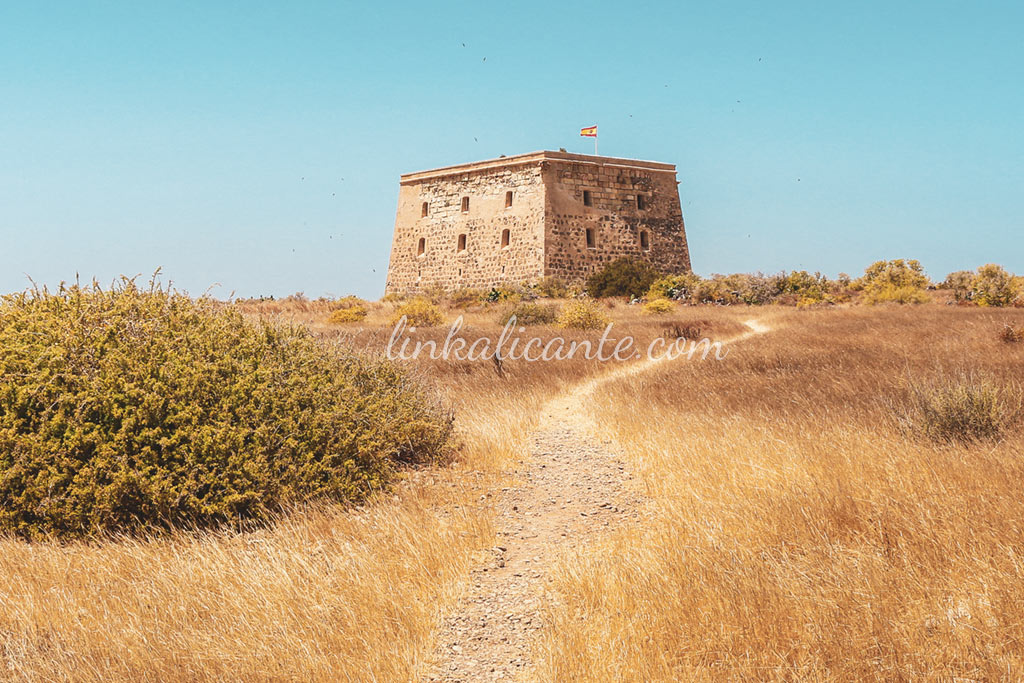
San José Tower
This sturdy military building built in 1790 has had several uses throughout its history: as a garrison fortress, dungeon in the Carlist wars, Civil Guard barracks and currently used as a warehouse for the Institute of Coastal Ecology. The Tower of San José is located in the center of the uninhabited part of the Flat Island of Tabarca and is accessed by the path that runs through this part of the island.
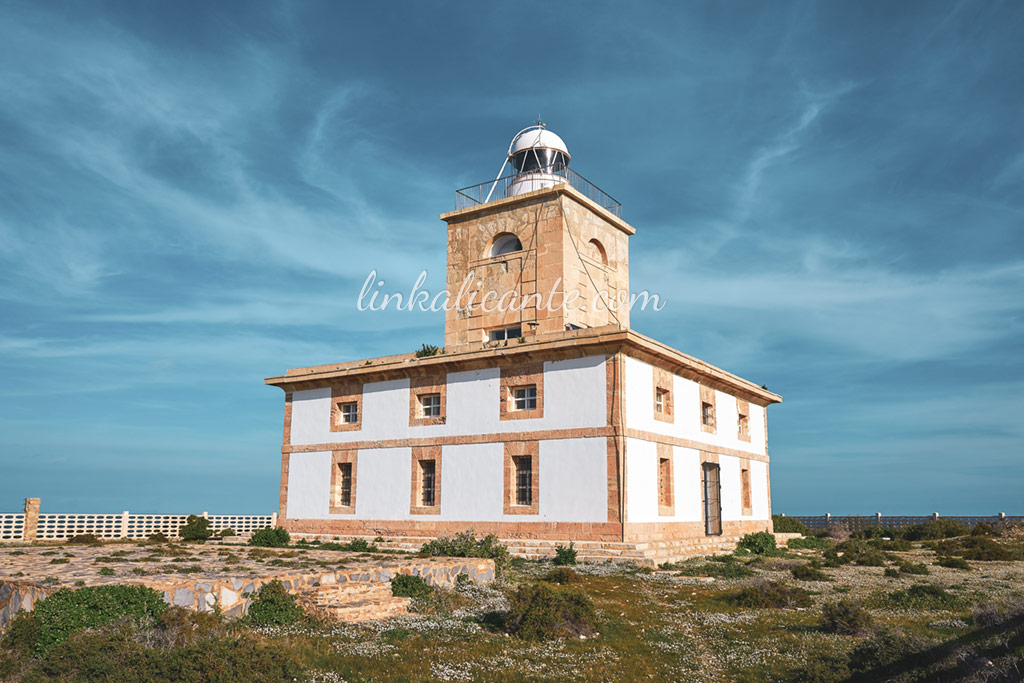
Tabarca Lighthouse
This building is considered an example of 19th century romantic engineering. It has two floors, a square tower and two cisterns. It was put into operation in 1854, a really important event for the island, since navigation in the surrounding area was very dangerous, as the island was not very high and had a large number of reefs, which was a danger for any kind of vessel. It was formerly used as a school for lighthouse keepers, but today it does not even function as a lighthouse, but instead houses a biological laboratory of great use to the Marine Reserve.
Where to eat in Tabarca?
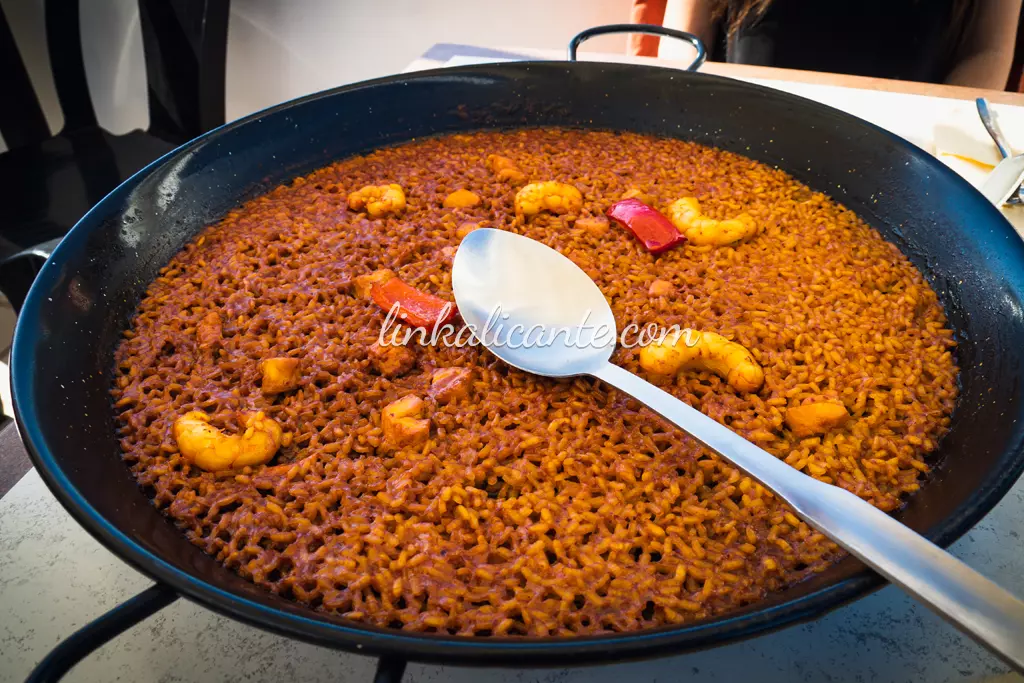
On my last two visits to the island I have eaten at La Muralla Restaurant, a quiet place away from the most bustling part of the island. It has a terrace with fantastic views and the staff is very friendly. Keep in mind that menus in Tabarca range from 25€ – 40€ and that cheap can be expensive.
Seafood Gastronomy
It is not difficult to imagine that if we are in the province of Alicante, Mediterranean cuisine, especially the famous rice dishes, will be the protagonists. On the island you can find typical dishes such as black rice or the typical paella, but Tabarca has its own particular rice: Caldero Tabarquino.
Tabarquino cauldron
It is a fish rice, between mellow and brothy, characterized by its intense flavor. It is named after the vessel in which it was made, and in which it is still cooked. It is a very original dish, because it is composed of two elaborations, one is the caldero itself, which is made with fish such as: dentex, grouper, lechola, rooster, etc. And the other is the rice, which is prepared with the leftover broth from the caldero, which gives it an incredible and delicious flavor.
The origin of this dish is to be found in the sea itself. The sailors began to prepare the caldero in their boats with the morralla and small fish that they did not manage to sell. From the ship, the recipe went to the homes of the sailors’ families, and from there to the best restaurants in Alicante. It is said that in all of Alicante you can eat caldero, but nowhere like it tastes in Tabarca. The people of Alicante themselves, from time to time, come to the island to taste their dish there.
Fideuá
It is another of the most popular dishes in the gastronomy of the area. Instead of using rice, thick noodles are used but with the same ingredients as a seafood paella: fish, squid, seafood…etc.
Arroz a banda
Like the caldero, it is a fishermen’s dish that used to use the morralla that nobody wanted to elaborate a broth or stock, together with ñoras and alioli (garlic mayonnaise). Then separately (a banda), the broth is cooked with rice and separately a stew in which floats the aioli, potato and shredded fish. This way you get two dishes in one and believe me, it’s delicious!
Tabarca Island "slow travel
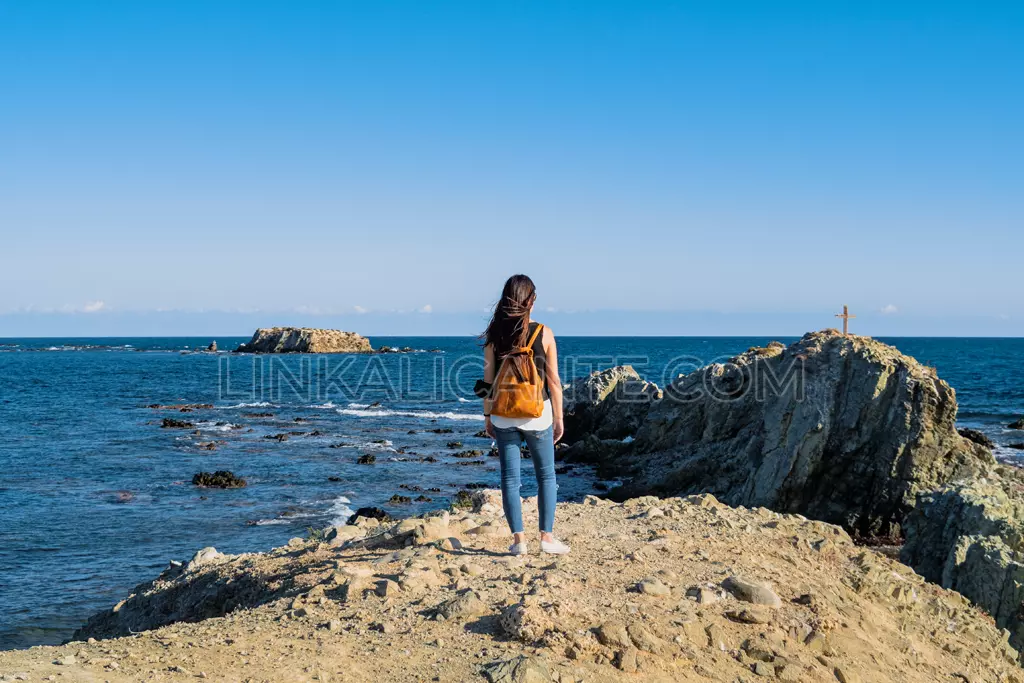
Tabarca is sometimes promoted as a plan for the “mass tourism” of sun and beach, but Tabarca is much more than thatespecially if you decide to spend one night on the island and enjoy the peace of mind that one breathes when the last ship of the evening has sailed or out of season.
It is very common to visit Tabarca in one day from Santa Pola. However, people who love “slow travel” will understand that such a marvel of seabed, culinary delights and coves to discover, deserve to consider a longer and more leisurely stay in this little corner with a special Mediterranean light.
Where to sleep in Tabarca?
✔️ Boutique Hotel Isla Tabarca. Located in the former Governor’s House.
✔️ La Trancada. Located in an old 18th century fisherman’s house.
✔️ Hostal Masin. Located very close to the Central Beach.
Video: Tabarca in 1 minute
How to get to Tabarca
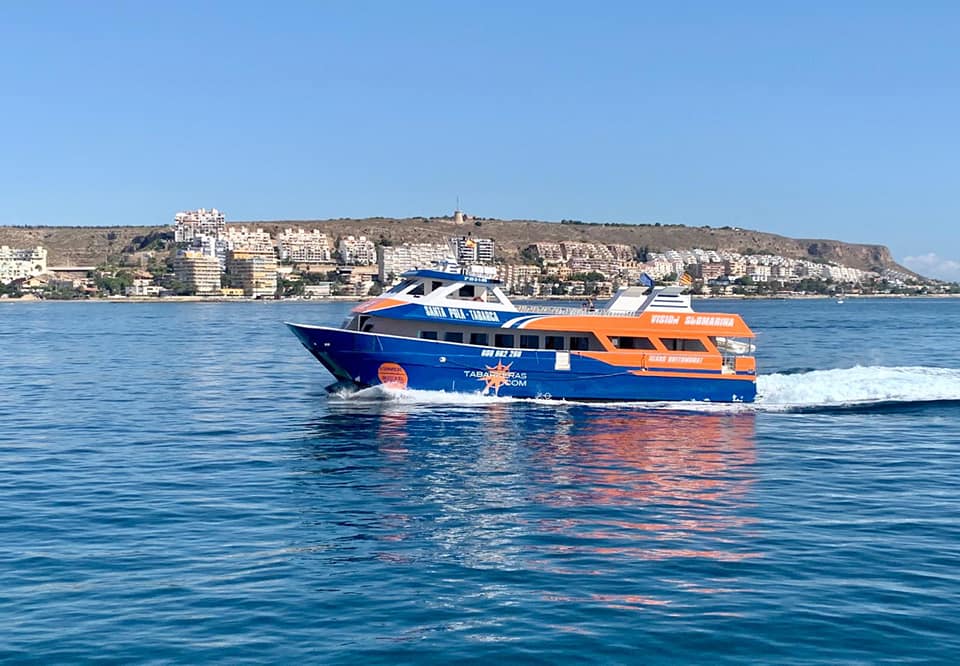
Obviously, being an island, you have to get there by boat. We can get to Tabarca from Alicante, Torrevieja and even Benidorm, although the most advisable option is to make the trip by boat from Santa Pola, as it is the shortest and most economical option. The boat tour company Tabarkeras is one of the longest operating this route (since 1975) and has a boat with underwater vision and also offers the possibility of booking several menus with the excursion, so you forget about having to look for a restaurant on the island. Book your boat trip to Tabarca Island from Santa Pola with Tabarkeras.
Reserva Marina de Tabarca, la primera de España
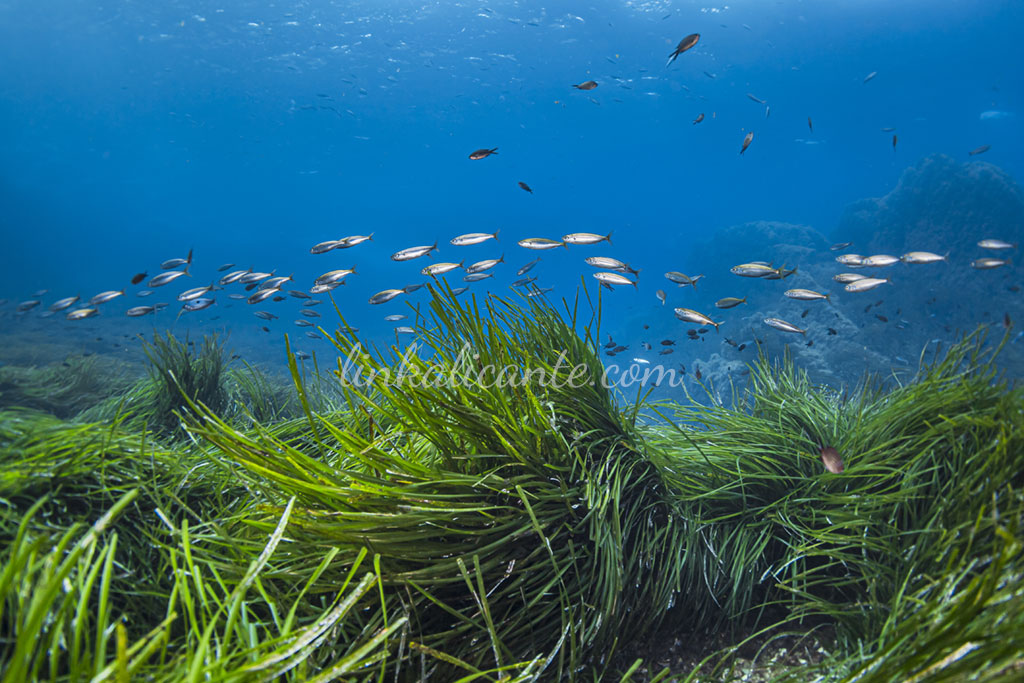
Tabarca es en realidad un archipiélago conformado por la Isla de Tabarca, la de mayor tamaño, y los islotes de La Galera, La Cantera y La Nao.
La isla de Tabarca tiene el mérito desde 1986 de ser la primera Reserva Natural Marina en España. De hecho, en años posteriores, ha servido como modelo de declaración, desarrollo y gestión para nuevos proyectos nacionales e internacionales de espacios marinos protegidos. También está declarada como zona ZEPA (Zona de Especial Protección para Aves) debido a la abundancia de especies de aves que acuden a esta isla.
La riqueza submarina
En contraste con la aridez del medio terrestre, los fondos marinos de la isla de Tabarca se encuentran recubiertos por praderas de Posidonia oceánica, planta acuática exclusiva del Mediterráneo que constituye una de las comunidades más productivas de la biosfera. El oxígeno producido por esta planta depura y enriquece las aguas mientras la cobertura vegetal de la pradera sirve de refugio para gran cantidad de larvas y alevines de peces. Los fondos de la reserva son también ricos en numerosas especies de invertebrados, tales como esponjas, gorgonias, estrellas de mar, erizos, nacras, cefalópodos y crustáceos entre otros, mientras gran variedad de peces se refugian entre las rocas o la vegetación.
Paraíso mediterráneo para el buceo
Tabarca es uno de los mejores lugares de Alicante para practicar snorkel. Una delicia para los amantes del buceo ya que gracias a sus aguas cristalinas que permiten a la luz penetrar profundamente y a su nula contaminación, poseen una rica variedad de fauna y flora marina. Entre la fauna marina se encuentran langostas, doradas, mero, caracolas, estrellas de mar o esponjas entre otras variedades. Es frecuente avistar ejemplares adultos de la tortuga boba.
Senderismo para todos los públicos
Para quienes prefieran el senderismo, existe un sendero que rodea la isla y permite contemplar el paisaje litoral y seguir los movimientos de las aves marinas. Si estás más interesado en recorrer la isla por la vía terrestre que buceando, este sendero sale desde la Iglesia de San Pedro y San Pablo. A partir de aquí puedes ir por la línea costera bordeando la población junto a la antigua muralla, además de contemplar especies animales y vegetales únicas en esta Reserva Natural, tendrás unas bonitas vistas hacia el Cabo de Santa Pola, que desde aquí parece muy cercano.
Historia de Tabarca
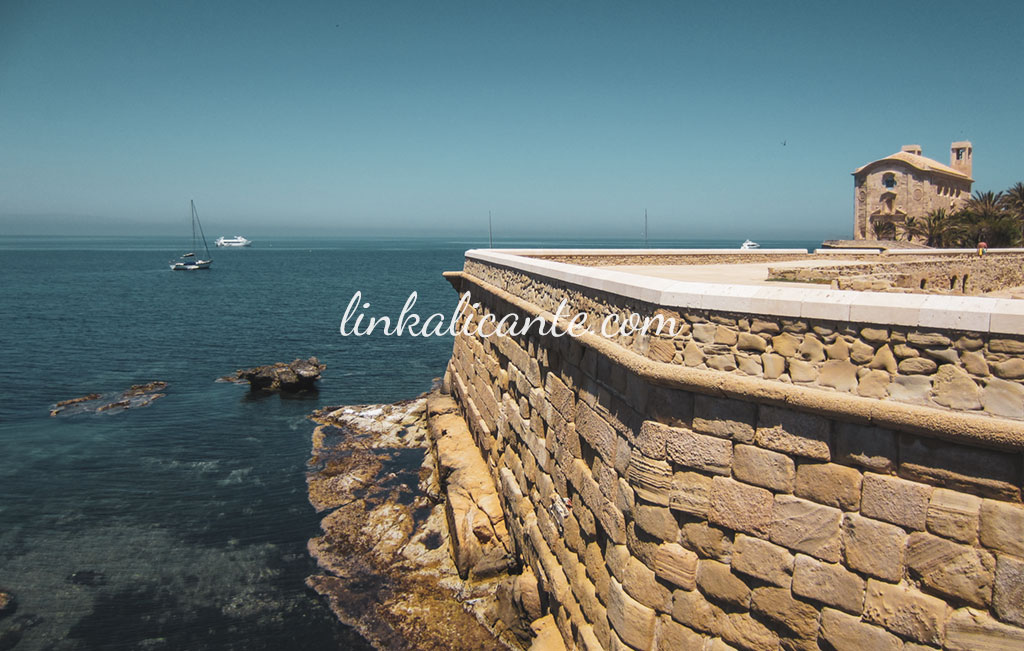
Ponte en situación y deja volar tu imaginación: una embarcación repleta de piratas berberiscos procedente del norte de África se dirige a las costas alicantinas listos para invadir y saquear sus poblaciones costeras. A tan sólo 4 km del cabo de Santa Pola, se topan con un pequeño islote rocoso y totalmente plano en su superficie, donde no divisan rastros de vida humana ni apenas vegetación. Al desembarcar encuentran una necrópolis, restos de naves naufragadas y ánforas romanas, pero nada que indique un asentamiento humano permanente.
Desde aquel primer encuentro en el S.XIV, los piratas berberiscos decidieron usar aquel archipiélago abrupto y rocoso cercano al litoral como base para sus asaltos a la costa levantina en los siglos siguientes.
La isla de los mil nombres
Plúmbea, Planesia, Isla de Santa Pola, Plaza Fuerte de San Pablo, Isla de San Pedro o Nueva Tabarca. Son numerosos los nombres que se han dado a este trozo de tierra del mar Mediterráneo desde tiempos antiguos. Se han encontrado restos de la época romana, como una necrópolis que se puede visitar hoy día, pero nada indica que fuese un asentamiento permanente en esa época.
No es hasta el siglo XVIII cuando empieza la historia de la actual Tabarca. En 1768, el rey Carlos III decide trasladar a la isla 69 familias genovesas que habían sido hechas prisioneras por el rey de Argel al conquistar éste la isla tunecina de Tabarka donde vivían de la pesca. A la vez, mandó allí un destacamento militar para asegurar la defensa frente a las incursiones piratas. A partir de este momento la isla toma el nombre de Nueva Tabarca.
En el siglo XIX Tabarca alcanza su máxima población con alrededor de 1000 personas viviendo permanentemente en la isla dedicadas a la pesca. Hoy en día, tan solo unas 50 personas viven allí todo el año, mientras que en verano la población se multiplica por diez.
Do not miss...
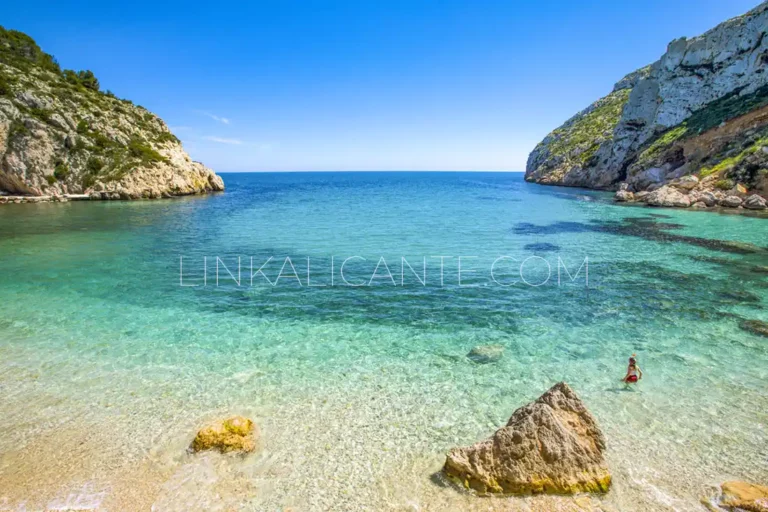
The 10 Best Coves in Alicante + Map
Discover the 10 Best Coves of Alicante and its location map in this tour from north to south along the coast of the Costa Blanca.
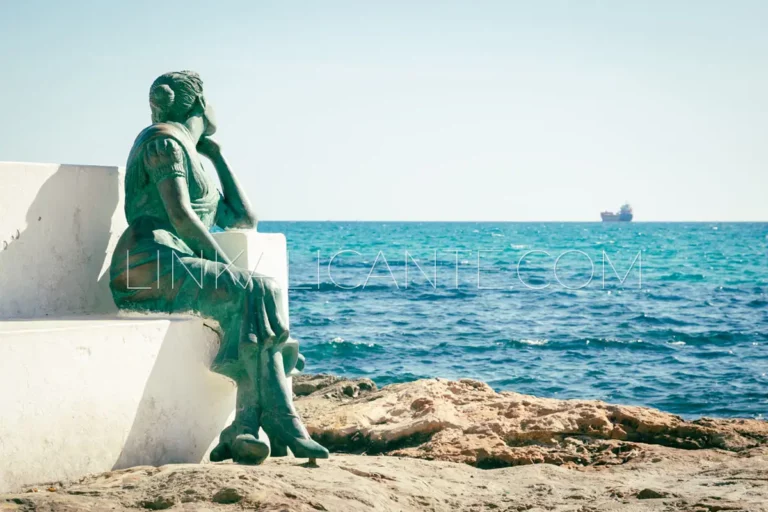
21 Best things to see and do in Torrevieja
Beyond its enviable climate and magnificent beaches, Torrevieja offers many natural and cultural attractions, come and meet them!
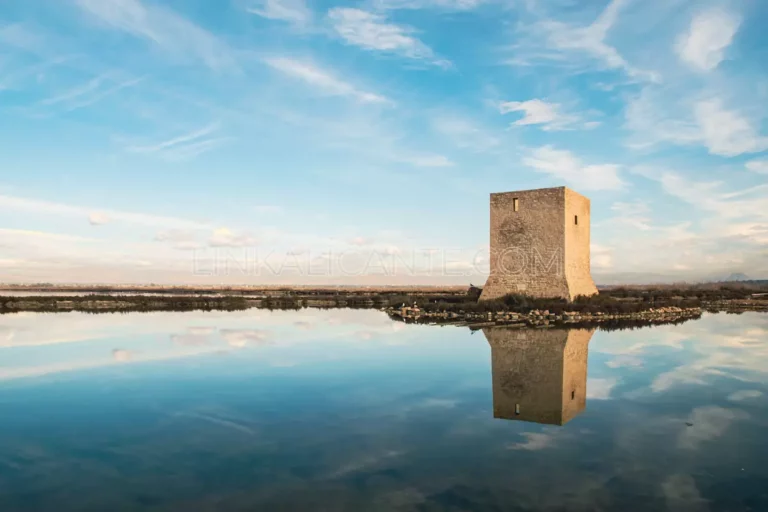
What to see in SANTA POLA: nature, culture, gastronomy and more
The best plans and places to visit in Santa Pola, beyond the beaches.
Guide to make the most of your stay.

